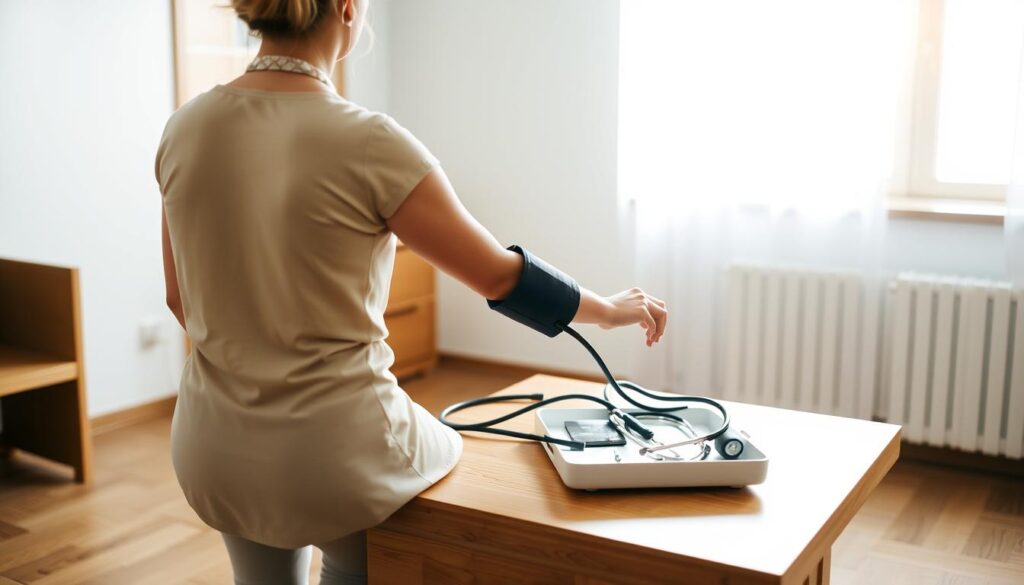Taking care of your health is one of the most important steps you can take for a fulfilling life. Routine check-ups with your doctor play a vital role in maintaining wellness and catching potential issues early. Many people wonder about the time commitment involved in these visits.
On average, a standard physical exam lasts between 30 to 60 minutes. This timeframe can vary depending on factors like age, gender, and the complexity of your health history. Medicare wellness visits, on the other hand, focus more on preventive care rather than hands-on exams.
Understanding the duration of these appointments can help you plan your day better. It also emphasizes the importance of prioritizing your health. Regular exams are a proactive way to ensure you’re on the right track toward long-term wellness.
Key Takeaways
- Standard physical exams typically take 30 to 60 minutes.
- Medicare wellness visits focus on preventive care rather than hands-on exams.
- Early detection of health conditions is a key benefit of regular check-ups.
- Exam duration can vary based on age, gender, and health history.
- Tests and screenings may extend the length of your visit.
Introduction to Physical Exams
Routine physical exams are a cornerstone of maintaining good health. These appointments help establish a baseline for your overall health and detect potential issues early. According to the American Medical Association, 84% of doctors recommend annual physicals for adults to ensure wellness and prevent health conditions.
Regular checkups are linked to increased longevity. Preventive screenings, a key part of these exams, reduce hospitalization risks by 33%. This makes physical exams a vital component of preventive care.
Medicare Part B covers many services related to physical exams, including wellness visits. These visits focus on preventive measures rather than hands-on exams. Understanding your coverage can help you make the most of your healthcare benefits.
When choosing where to go for a physical exam, consider the differences between urgent care and primary care options. The table below highlights key contrasts:
| Feature | Urgent Care | Primary Care |
|---|---|---|
| Appointment Availability | Walk-in | Scheduled |
| Focus | Immediate needs | Long-term health |
| Cost | Higher | Lower |
Prioritizing regular physical exams is a proactive step toward better wellness. Whether through urgent care or primary care, these appointments are essential for maintaining your health.
What to Expect During a Physical Exam

Understanding what happens during a checkup can ease any concerns you might have. A routine physical exam is designed to evaluate your overall health and identify potential health issues early. It typically includes three main components: measuring vital signs, reviewing your medical history, and conducting a hands-on physical examination.
Vital Signs Measurement
The first step is measuring your vital signs. This includes checking your blood pressure, pulse, weight, and height. A normal blood pressure reading is around 120/80 mmHg, while a healthy pulse rate ranges from 60 to 100 beats per minute. Your doctor will also calculate your BMI using your weight and height to assess your body composition.
Health History Review
Next, your doctor will review your medical history. This includes discussing any current symptoms, past illnesses, and family health records. Providing accurate information helps your doctor identify potential risks or hereditary conditions. Medicare wellness visits may also include cognitive screenings to assess memory and mental clarity.
Physical Examination Process
The hands-on physical examination involves assessing your body systems. Your doctor will listen to your heart and lungs using a stethoscope. They may also palpate your abdomen to check for abnormalities. Neurological tests, such as reflex checks and balance assessments, are often included to evaluate your nervous system.
How Long Does a Physical Exam Take?
The length of a medical visit depends on several factors, including the type of services provided. For example, urgent care physicals typically average around 45 minutes, including paperwork. This timeframe can vary based on individual needs and the complexity of your health history.
A standard checkup often includes three main phases. First, measuring vital signs and reviewing your medical history takes about 15 minutes. Next, the hands-on physical examination usually lasts around 20 minutes. Finally, consultations with your doctor may extend the visit by 10 to 25 minutes.
In urgent care settings, insurance verification can add an extra 5 to 7 minutes to your visit. For patients with complex conditions, multi-system reviews may extend the exam by 8 to 12 minutes. Additionally, 68% of extended exam time is often spent explaining lab results.
Some clinics offer same-day test results, while others require lab processing, which can affect the overall timeline. For instance, +MEDRITE boasts a 94% on-time completion rate, ensuring efficient services for patients.
Understanding these timelines helps you plan your day better and ensures you’re prepared for your visit. Prioritizing these tests and evaluations is a proactive step toward maintaining your health and addressing potential issues early.
Preparation Tips for Your Physical Exam

Proper preparation for your health check ensures a smooth and efficient experience. Knowing what to bring and what to avoid can save time and improve the accuracy of your test results. Here’s a guide to help you get ready for your appointment.
What to Bring
Bringing the right documents and information is crucial. Start with your medical history, including any past diagnoses or treatments. A list of current medications, including dosages, is also essential. Don’t forget your ID, insurance card, and vaccine records.
If you’re visiting urgent care, pre-registration options can speed up the process. Some clinics also allow wearable health data integration, which can provide additional insights into your health problems.
What to Avoid Before the Exam
Certain habits can affect your test results. For example, a 12-hour fasting period is often required for accurate lipid panels. Avoid alcohol and caffeine for at least four hours before your appointment to ensure accurate readings.
Smoking and stress can also impact your health metrics. Prioritize rest and a healthy diet in the days leading up to your exam. For more preventive measures, check out our guide on preventive measures.
| What to Bring | What to Avoid |
|---|---|
| Medical history | Alcohol |
| Medication list | Caffeine |
| ID and insurance card | Smoking |
| Vaccine records | Stress |
By following these tips, you can make sure your visit is as productive as possible. Proper preparation not only saves time but also helps your doctor provide the best care for your needs.
Benefits of Regular Physical Exams
Regular checkups offer more than just a snapshot of your health—they provide long-term benefits. These appointments are a proactive way to maintain wellness and address potential health problems before they escalate. By prioritizing your health, you can reduce risk factors and improve your quality of life.
One of the most significant advantages is the early detection of health issues. Routine screenings can identify conditions like cancer, diabetes, and heart disease in their initial stages. For example, 40% of cancers are detected early through regular exams, significantly improving treatment success rates.
Early Detection of Health Issues
Detecting health problems early can make a world of difference. Conditions caught in their initial stages are often easier to treat and manage. This not only improves outcomes but also reduces the financial burden of chronic condition management.
Medicare covers 100% of wellness visits with participating providers, making preventive care accessible. These visits include screenings that can identify potential risk factors and provide personalized prevention plans.
Building a Relationship with Your Doctor
Consistent visits help you build a strong relationship with your doctor. This continuity improves diagnostic accuracy and ensures your care is tailored to your needs. Your doctor becomes familiar with your medical history, making it easier to spot changes or emerging issues.
Mental health screenings are also included in many annual physical exams. This holistic approach ensures both your physical and emotional wellness are addressed.
| Diagnosis Stage | Success Rate |
|---|---|
| Early Detection | 85% |
| Late Detection | 35% |
By committing to regular checkups, you’re investing in your long-term health. The benefits extend beyond immediate results, offering peace of mind and a healthier future.
Conclusion
Prioritizing your health through regular checkups is a smart investment in your future. With 92% patient satisfaction at +MEDRITE, it’s clear that quality care matters. These visits not only help detect conditions early but also ensure you stay on top of your wellness goals.
Medicare wellness visits, required every 365 days, focus on preventive measures. Mobile appointment booking and symptom journaling can streamline your experience. Scheduling follow-ups promptly ensures continuity in your health journey.
Understanding the cost-benefit of preventive care can motivate you to stay consistent. Regular tests and screenings are essential for maintaining a healthy lifestyle. For more insights, explore this study on patient examination durations.
Take charge of your health today. Regular visits are a proactive step toward a healthier, more fulfilling life.


